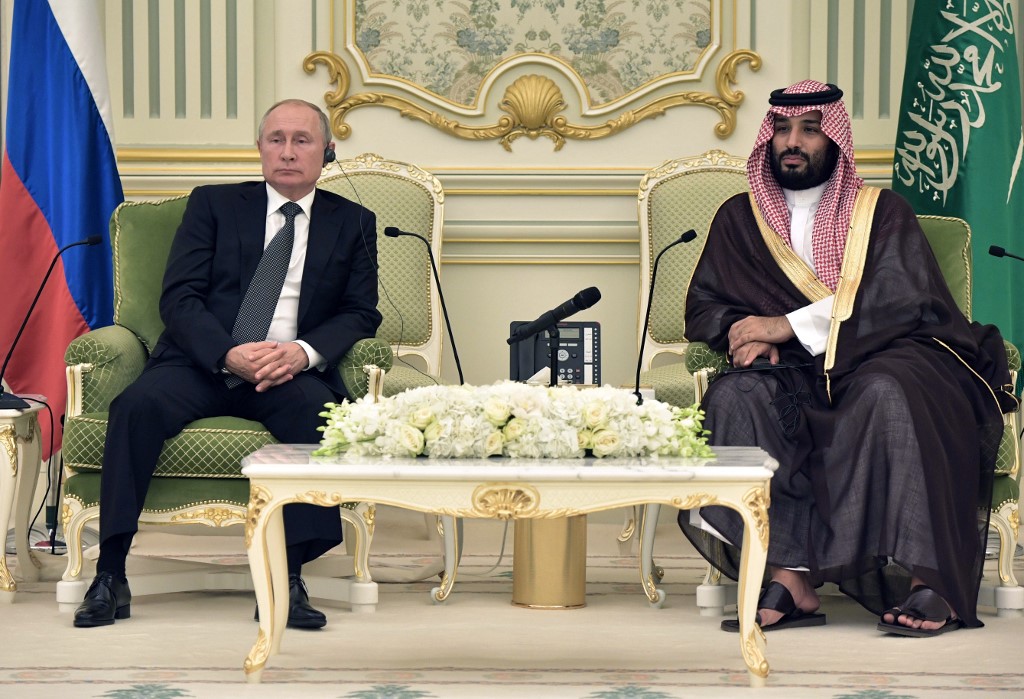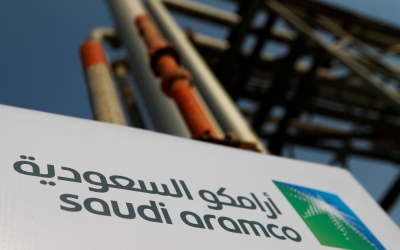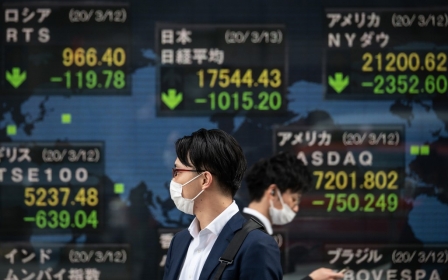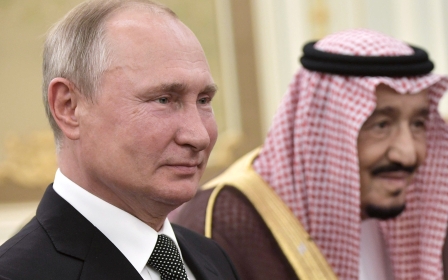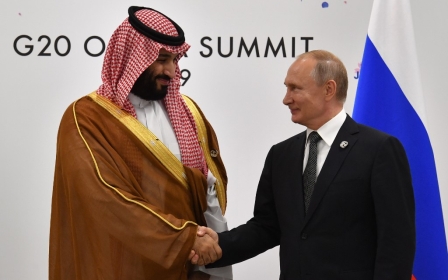Coronavirus and oil prices: What lies ahead?

The recent failure of OPEC+ to reach an agreement and prolong their oil-cut deal, after Russia refused Saudi Arabia’s proposal for additional output cuts, has resulted in a sharp oil-price drop. As a result, the agreement that has held for three years became ineffective on 1 April.
These developments triggered a harsh reaction from Riyadh, which threatened to flood the market with discounted oil.
Moscow is now seen by many as an irresponsible actor which turned its back on its partners and shot itself in the foot by refusing to maintain the deal, as it doesn’t benefit from oil prices lower than $42.40 a barrel. Moreover, by some estimates, Russia is losing up to $150m per day because of the decreased oil price.
This has been further exacerbated by Covid-19 which might have a stronger negative effect on the Russian economy.
Undermining the partnership
New MEE newsletter: Jerusalem Dispatch
Sign up to get the latest insights and analysis on Israel-Palestine, alongside Turkey Unpacked and other MEE newsletters
The disagreement on production cuts could also undermine the Russia-Saudi partnership, which has grown stronger since 2015 in many ways around the common goal of maintaining balanced oil prices.
That said, it is hard to believe that Moscow did not calculate these potential consequences.
While the current standoff is a setback to bilateral relations, it is not a fatal one, nor does it destroy the OPEC+ format
Oil prices have been declining since the start of the year due to a couple of major factors, including slow growth of global oil demand and the Covid-19 pandemic, which has reduced global economic activities and development. According to an OPEC report, the pandemic has had a major negative impact on demand forecasts, with global oil demand growth this year now forecast to be 0.06 million barrels per day (m/bd), down from 1.1 mb/d in December.
The projection may continue to fall as the global economy faces a recession that will further decrease global oil demand for at least half a year.
The International Monetary Fund has predicted that the coronavirus pandemic will cause a global recession that could be worse than the 2008-2009 financial crisis, which caused global oil demand to drop by 1.5 million bpd, according to BP statistical review of world energy. According to a survey done by Bloomberg, global oil demand is forecast to drop by about 17 mb/d in April this year.
While coronavirus is a black swan, global oil consumption growth has been slowing for years. Even before the OPEC+ failure, slow growth and the coronavirus pandemic had caused oil prices to drop by almost 30 percent. After the Saudi-Russia spat, prices fell by another quarter, and after that the slide has deepened by another 40 percent with oil sitting at around $25 a barrel today.
It is quite clear that even without the failure of OPEC+ to preserve the deal, oil prices would have decreased anyway, albeit more slowly.
Caution from Moscow
So why didn’t Russia want to expand oil output cuts? According to the Russian Energy Ministry, Moscow did not want to completely withdraw from the deal, but urged Riyadh to extend the existing level of output cuts and see how the situation with coronavirus and global oil demand would unfold.
“We cannot fight a falling demand situation when there is no clarity about where the bottom [of demand] is,” Russia’s deputy energy minister, Pavel Sorokin, told Reuters. “It is very easy to get caught in a circle when, by cutting once, you get into an even ... worse situation in say two weeks: oil prices would shortly bounce back before falling again as demand continued to fall," he argued.
In addition, in recent years, some non-OPEC countries - including the US, Canada and Brazil - have raised their oil output. One reason has been increased investment in expensive shale oil production.
Since 2015, the US has increased oil output by 2.6m bpd. Its crude oil exports grew five-fold since 2015 from 465,000 bpd to 3m bpd in 2019 and its total oil exports (including crude, hydrocarbon gas liquids and other liquids) grew from 4.7m bpd to 7.6m.
As a result, it has become an important new exporter, with additional expansion capacities in the coming years.
In many ways, this shift is connected to the cancellation of an embargo on crude oil exports in December 2015. To a certain degree, the OPEC+ deal helped US shale oil producers to develop and thrive, increasing their output in recent years.
However current low oil prices had already caused problems for US shale oil producers. In addition to that, President Trump called President Putin on Monday to discuss the current situation in the oil market and express concern over oil prices - not only for Russia but for the US too.
Thus, a mix of factors - the global slowdown of oil demand, Covid-19, rising oil output from the US and other shale oil producers, and the consequent decrease of OPEC’s share of the market - influenced Russia’s decision not to continue oil production cuts.
It is also important to note that Russia’s oil output did not actually decrease after the OPEC+ deal was struck in late 2016, which is confirmed by BP and OPEC annual statistical bulletins. Moscow did not stick to the agreement so as not to risk its market share.
In addition, Russia doesn’t have as much capacity to increase its oil production as Saudi Arabia does. Although Russia can fairly quickly add 200,000-300,000 bpd to its oil output, it will take it another half a year to raise it further to 500,000 bpd, which will peak its output capacity at around 11.8m bpd.
Forming a united front
Amid this backdrop, is Russia-Saudi cooperation at risk? Being major global oil producers, they were the main pillars of the functioning OPEC+ deal. Since the global oil price collapse in 2014-2015, Saudi Crown Prince Mohammed bin Salman has built up a new relationship with the Kremlin.
While the current standoff is a setback to bilateral relations, it is not a fatal one, nor does it destroy the OPEC+ format. Moscow views Riyadh as an important actor in the oil market, and sooner or later the two will have to restore their dialogue.
Even as OPEC’s loss of market share undermines its capacity to consistently affect global oil prices, members of this cartel still have the ability to form a united front, decreasing common risks.
As long as there is no clarity on the timeframe of the Covid-19 pandemic, bringing with it massive global economic uncertainty, the OPEC+ deal doesn’t make much sense. But when the global economy recovers, this format could be helpful in adjusting global oil prices, allowing Russia and Saudi Arabia to strike a new agreement.
The views expressed in this article belong to the author and do not necessarily reflect the editorial policy of Middle East Eye.
This article is available in French on Middle East Eye French edition.
Middle East Eye delivers independent and unrivalled coverage and analysis of the Middle East, North Africa and beyond. To learn more about republishing this content and the associated fees, please fill out this form. More about MEE can be found here.



